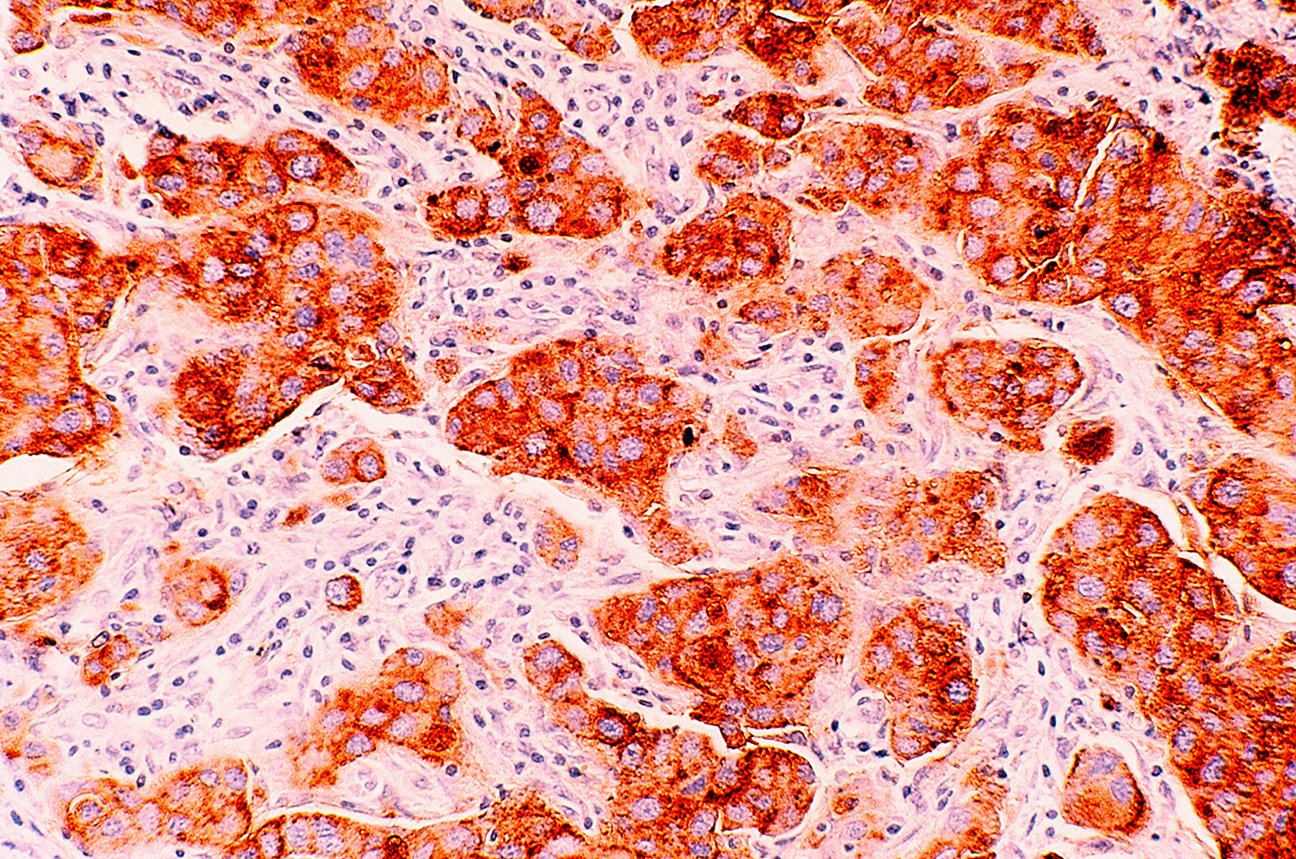- Diseases
- Acoustic Neuroma (14)
- Adrenal Gland Tumor (24)
- Anal Cancer (66)
- Anemia (2)
- Appendix Cancer (16)
- Bile Duct Cancer (28)
- Bladder Cancer (68)
- Brain Metastases (28)
- Brain Tumor (230)
- Breast Cancer (718)
- Breast Implant-Associated Anaplastic Large Cell Lymphoma (2)
- Cancer of Unknown Primary (4)
- Carcinoid Tumor (8)
- Cervical Cancer (154)
- Colon Cancer (164)
- Colorectal Cancer (110)
- Endocrine Tumor (4)
- Esophageal Cancer (42)
- Eye Cancer (36)
- Fallopian Tube Cancer (6)
- Germ Cell Tumor (4)
- Gestational Trophoblastic Disease (2)
- Head and Neck Cancer (6)
- Kidney Cancer (124)
- Leukemia (344)
- Liver Cancer (50)
- Lung Cancer (288)
- Lymphoma (284)
- Mesothelioma (14)
- Metastasis (30)
- Multiple Myeloma (98)
- Myelodysplastic Syndrome (60)
- Myeloproliferative Neoplasm (4)
- Neuroendocrine Tumors (16)
- Oral Cancer (100)
- Ovarian Cancer (170)
- Pancreatic Cancer (166)
- Parathyroid Disease (2)
- Penile Cancer (14)
- Pituitary Tumor (6)
- Prostate Cancer (144)
- Rectal Cancer (58)
- Renal Medullary Carcinoma (6)
- Salivary Gland Cancer (14)
- Sarcoma (236)
- Skin Cancer (296)
- Skull Base Tumors (56)
- Spinal Tumor (12)
- Stomach Cancer (60)
- Testicular Cancer (28)
- Throat Cancer (90)
- Thymoma (6)
- Thyroid Cancer (98)
- Tonsil Cancer (30)
- Uterine Cancer (78)
- Vaginal Cancer (14)
- Vulvar Cancer (18)
- Cancer Topic
- Adolescent and Young Adult Cancer Issues (20)
- Advance Care Planning (10)
- Biostatistics (2)
- Blood Donation (18)
- Bone Health (8)
- COVID-19 (362)
- Cancer Recurrence (120)
- Childhood Cancer Issues (120)
- Clinical Trials (626)
- Complementary Integrative Medicine (24)
- Cytogenetics (2)
- DNA Methylation (4)
- Diagnosis (230)
- Epigenetics (6)
- Fertility (64)
- Follow-up Guidelines (2)
- Health Disparities (14)
- Hereditary Cancer Syndromes (124)
- Immunology (18)
- Li-Fraumeni Syndrome (8)
- Mental Health (118)
- Molecular Diagnostics (8)
- Pain Management (62)
- Palliative Care (8)
- Pathology (10)
- Physical Therapy (18)
- Pregnancy (18)
- Prevention (896)
- Research (390)
- Second Opinion (74)
- Sexuality (16)
- Side Effects (604)
- Sleep Disorders (10)
- Stem Cell Transplantation Cellular Therapy (216)
- Support (404)
- Survivorship (322)
- Symptoms (184)
- Treatment (1776)
Exercise during cancer treatment: 4 things to know
4 minute read | Published October 12, 2022
Medically Reviewed | Last reviewed by an MD Anderson Cancer Center medical professional on October 12, 2022
For years, doctors have recommended exercise to reduce patients’ risk of developing cancer, and to help cancer survivors thrive after treatment ends. But what about exercising during treatment? There were no recommendations, until now.
The American Society of Clinical Oncology (ASCO) recently issued the first-ever evidence-based exercise guidelines for adults in active cancer treatment.
“This is big,” says Karen Basen-Engquist, Ph.D., director of MD Anderson’s Center for Energy Balance in Cancer Prevention and Survivorship. “When patients asked whether they should exercise during treatment, we had no official guidance about what to tell them. Now we do.”
Years of clinical trials show the benefits of exercise
To develop the guidelines, ASCO assembled a panel of experts who analyzed more than 100 clinical trials examining the link between exercise and cancer treatment.
What they found left little doubt that staying physically active improves symptoms and side effects in patients undergoing chemotherapy, radiation therapy, or both. It also helps those who have surgery recover faster with fewer complications.
“The science shows that exercising during cancer treatment eases fatigue, anxiety and depression while improving quality of life and physical function,” Basen-Engquist says. “Staying active helps patients continue engaging in the regular activities of daily life.”
Still, in the minds of many, exercise and cancer don’t go together, she says.
“You’d be surprised by the number of people who believe exercise during cancer treatment is a radical idea. They think cancer patients should curl up on the couch with a blanket and take it easy.”
The new guidelines, Basen-Engquist says, offer reassurance that exercise is safe and good for patients during cancer treatment.
Building an exercise routine during cancer treatment
The guidelines recommend regular aerobic exercise – such as walking, jogging or cycling, and strength training – such as lifting weights or using resistance bands, for patients whose cancer has not spread beyond its initial site.
Aerobic exercise helps strengthen the heart and lungs. Resistance exercise strengthens the muscles.
“Both types of exercise can work together to help cancer patients maintain health and well-being,” Basen-Engquist says.
Aerobic exercises should be performed at moderate intensity, she says. This is a pace that allows you to talk, but not sing. That’s compared to vigorous intensity, where you can’t say more than a few words without pausing for a breath.
Start slowly, Basen-Engquist advises, and listen to your body. If your energy level is low, adjust how long or how hard you exercise until you feel better.
Set a goal of reaching 150 minutes of exercise per week.
“Spread that 150 minutes over multiple days,” she says. “I tell patients to aim for 30 minutes a day, five days a week, which equals 150 minutes.”
If 30 minutes is too difficult, she suggests 10 minutes of exercise in the morning, 10 minutes after lunch, and 10 minutes in the evening.”
Walking is a good option, Basen-Engquist says. If walking isn’t for you, she says some of her patients instead dance, swim, golf, learn tai chi or garden.
“You’d be amazed at the muscle strength you develop when pulling weeds,” she says.
How does exercise counteract cancer?
No one knows with certainty, but Basen-Engquist points out that exercise reduces levels of inflammation and insulin, which are linked to some cancers.
Also, exercise induces angiogenesis, or the creation of new blood vessels, which could mean that more blood-driven anti-cancer medicine can be delivered to cancerous tumors.
“Exercise may make chemotherapy more effective,” she says.
Immune function also benefits. While cancer weakens the immune system, exercise boosts the circulation of immune cells that attack cancer. It may even help powerful immunotherapy treatments that work better.
Exercising during cancer treatment isn’t one-size-fits-all
Exercising to improve results during cancer treatment is empowering, says Basen-Engquist. It puts the patient in control, at a time when cancer has created a loss of control.
The amount of physical activity each patient can handle will vary.
“The type of cancer you have, the treatments you’re receiving, the side effects you’re experiencing and your level of fitness will all be factored into your exercise plan,” Basen-Engquist says.
Talk with your doctor about what’s right for you, then start moving.
"Even if you can only manage a few minutes of walking, do it,” Basen-Engquist says. “Small steps lead to big results.”
Request an appointment at MD Anderson online or by calling 1-888-665-0889.

Exercise may actually make cancer treatments work better.
Karen Basen-Engquist, Ph.D.
Researcher





